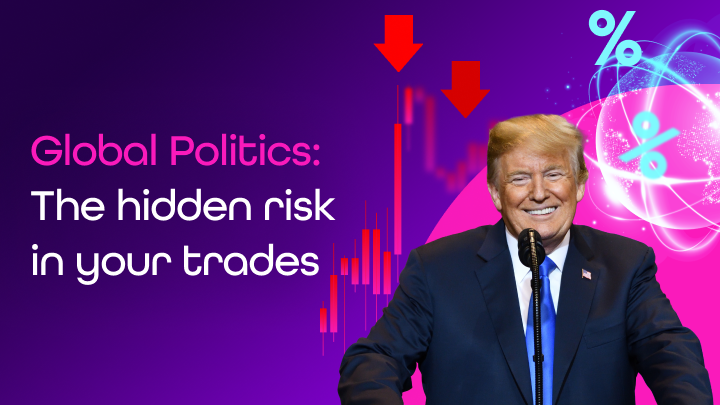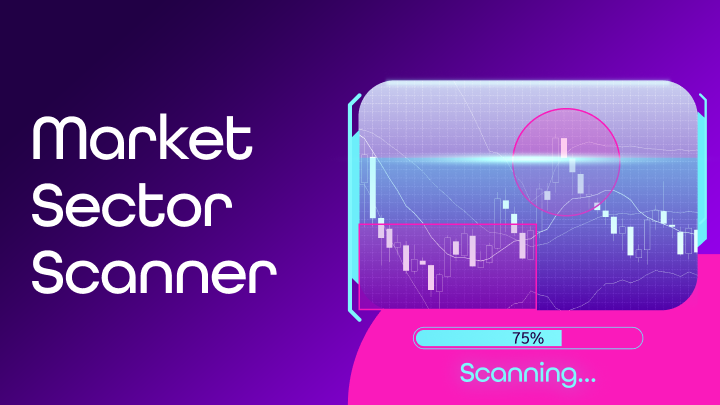How tariffs, Trump, and global politics are shaking your trades – and how to change it
Markets are spiking, diving, and faking out. Traders are getting whiplash. If you're wondering what the hell is going on, you're not alone — and you're not imagining it. This article tells only part of the story. Want to know the rest? Watch the recording of our stream on the Fintokei YouTube channel.

In our latest Fintokei stream, seasoned trader and market analyst Brad Alexander took us on a deep dive into one of the hottest (and most confusing) topics in global trading today: tariffs. But this wasn’t your average lecture. It was a real talk breakdown of how fundamentals like trade policy and presidential tweets are throwing technicals off balance, and what you can actually do about it.
“It’s Trump 1.0 on steroids” — why fundamentals are back with a vengeance
Brad didn’t mince words. “We live in strange times,” he opened. “And if you’re finding trading hard right now — it’s because it is.”
He draws a clear line between technical indicators that used to work during calmer administrations and the current whiplash environment, where fundamental shocks override chart patterns almost daily.
Remember when a moving average cross was enough to plan a trade? Yeah, not anymore.
Now, according to Brad, if you’re not checking the calendar, tracking tariff updates, and factoring in political populism, you’re basically flying blind. And worse — you could be caught on the wrong side of a move that has nothing to do with your setup.
“Fundamentals always come first. I won’t touch a trade if I know there’s a big report or surprise event on the way,” Brad said. “You’ve got to know what’s coming — or your stop loss will do the knowing for you.”
Who pays for tariffs? (Hint: Not China)
One of the most eye-opening moments came when Brad addressed the misunderstanding around tariffs — something even CEOs are still getting wrong.
“I saw a guy on Bloomberg the other day. He didn’t realize he had to pay tariffs on the goods he imported until he got hit with a huge bill,” Brad said. “He thought the other country paid it. Newsflash: the importer pays.”
Brad explained how tariffs are effectively a tax on businesses and consumers, not foreign governments. That means price inflation, disrupted supply chains, and panic that spills over into markets — especially currencies, commodities, and indices.
His message? You can’t trade clean setups if the underlying conditions are messy. And right now, they’re messier than ever.
What traders need to watch (and trade) right now
Brad gave a crash course on what really matters when fundamental chaos hits the charts:
🗓️ Planned vs. Surprise Events
Know the difference. You can prepare for NFP, CPI, and OPEC meetings. But if tariffs suddenly spike to 145% overnight? That’s a different beast.
🛢️ Oil & Commodities
Tariffs affect oil supply chains. That means sudden shifts in demand — especially if major producers like China get boxed in.
💵 Currency Volatility
In Brad’s words: “Indices go up and down. Currencies go both ways.” When fundamentals are in flux, currency pairs become your battlefield — especially USD crosses.
📈 Support, Resistance, and Reversals
When fundamentals drive the spike, use S/R and candlestick confirmation to catch the reversal. “Trade the reaction, not the news,” Brad emphasized.
🧪 Backtesting is your friend
If your strategy doesn’t work in these conditions, don’t guess. Test it. Rebuild it. Use both historical price behavior and calendar events to find patterns you can trust.
Politics is back on your charts — deal with it smartly
As Brad reminded everyone: “You can’t control tariffs, tweets, or central banks — but you can control how you trade them.”
So next time you’re tempted to hit Buy just because the stochastic is oversold… stop. Zoom out. Check the news. Know your fundamentals. And if tariffs are back in the headlines, adjust your plan before the market adjusts it for you.
Get the full picture!
Watch the full stream with Brad on our YouTube channel.


